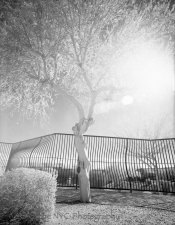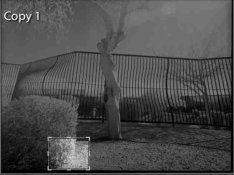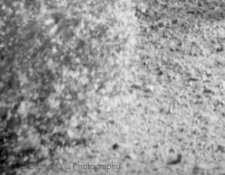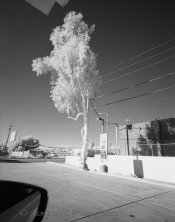Stone:
This may be too late, but just in case it isn't ...
Your question about the effect of temperature indicates to me that there is something about (near) IR film that you are misunderstanding.
None of us use a meter that will tell us how much film sensitive radiation there is in the scenes we photograph.
All of our calculations are based on:
1) we know that the light we see reflected off our subject is accompanied by at least some IR that our film is sensitive too; and
2) we have or gain experience as we go about what the percentage is of IR light reflecting from the subject.
As an example, we learn from experience that in certain weather conditions, at certain times of day there is a relatively high percentage of ambient IR in the total ambient light available. We also learn that certain types of vegetation reflect more of that IR than other types do.
If we didn't use something like a very dense R72 filter, we would never see any IR effect on the film, because the film is much more sensitive to visible light then it is to IR.
We have no way to meter the IR. We do, however, have a way to meter the visible light, and through experience we learn how much IR is around when a certain amount of visible light around, so we do have a way of approaching the problem.
First, we put something like an R72 filter on the camera, which blocks out almost all the visible light, but transmits the IR. We do not meter through that filter - use a separate hand-held meter.
Next, based on our experience that indicates that for any level of illumination we see, there are about 6 stops less intense IR present as well, we measure the visible light, and extrapolate the IR by assuming there are 6 stops less available. We accomplish that extrapolation by metering at EI 6, which is 6 stops less than EI 400.
Finally, we expose the film through the filter, and bracket around that 6 stops less estimate, because it isn't nearly as accurate as our usual metering technology.
Hope this helps.










